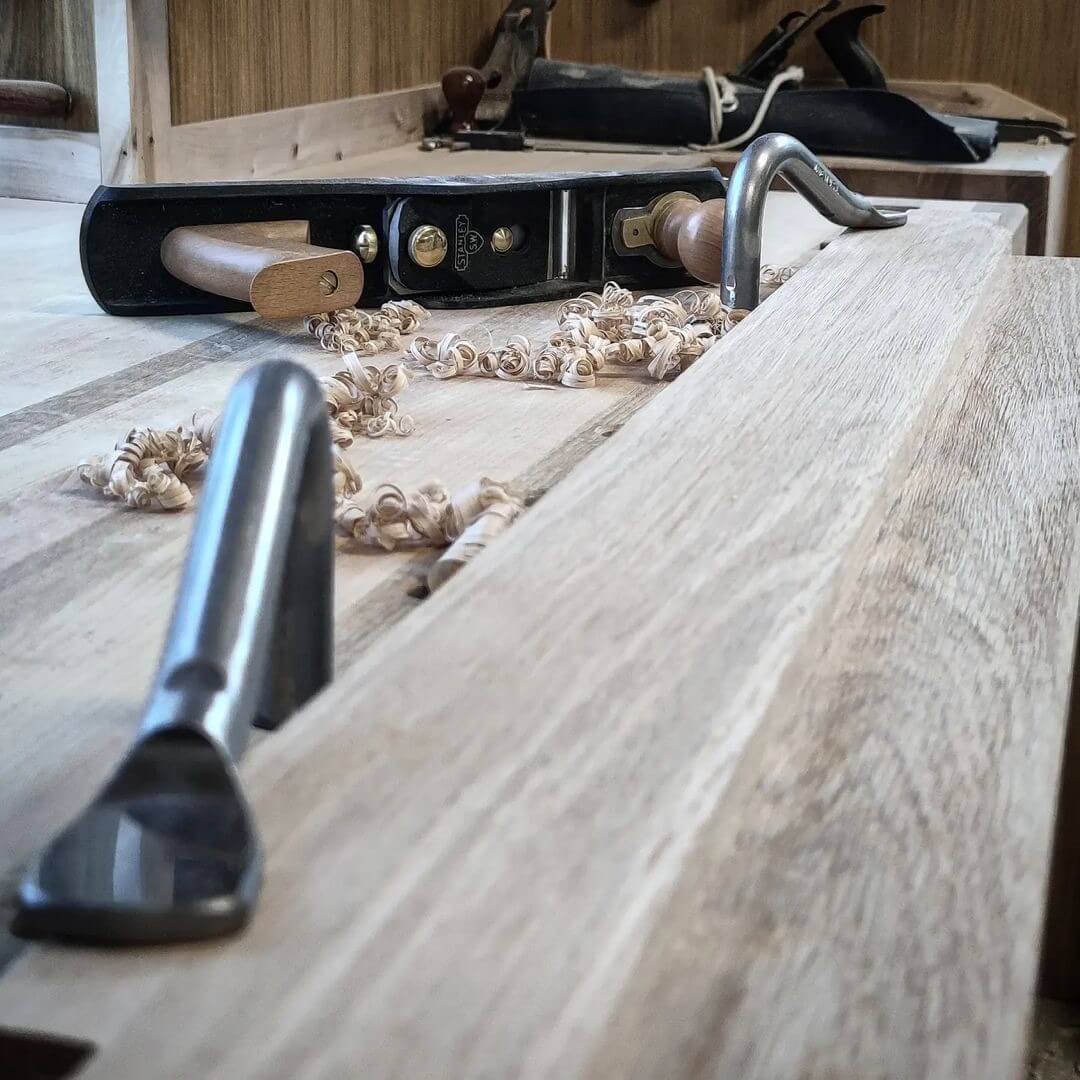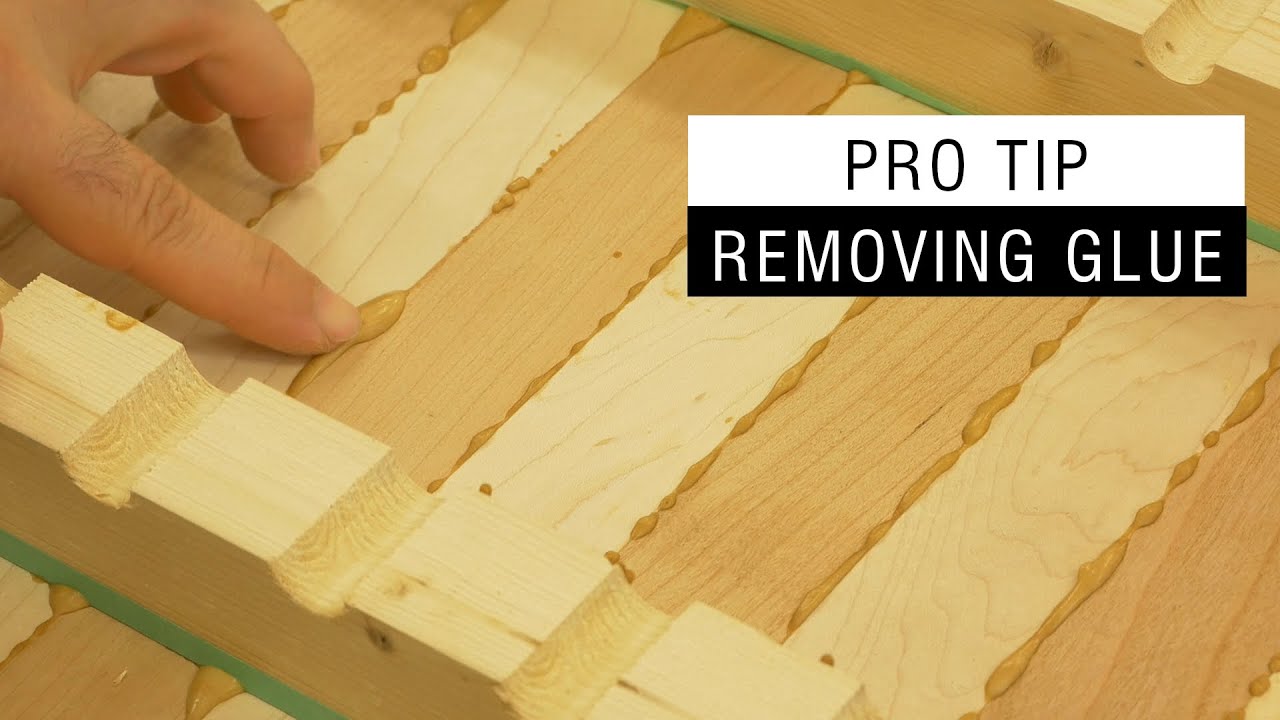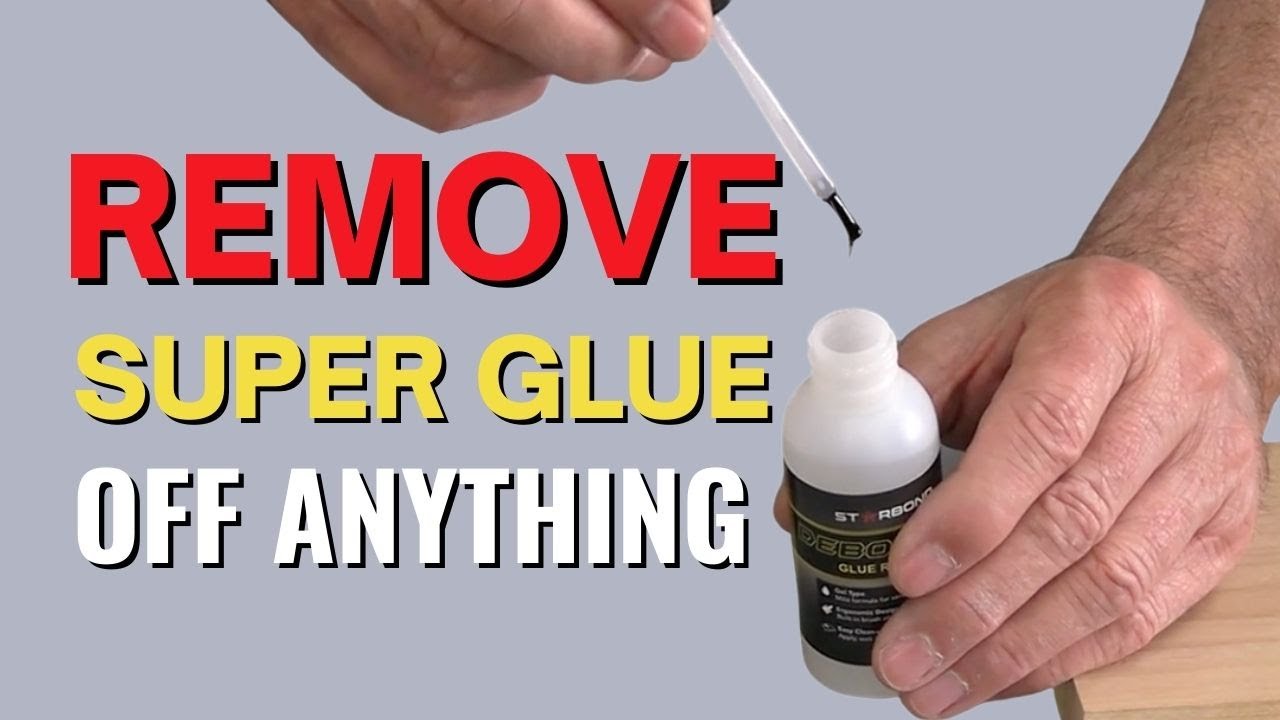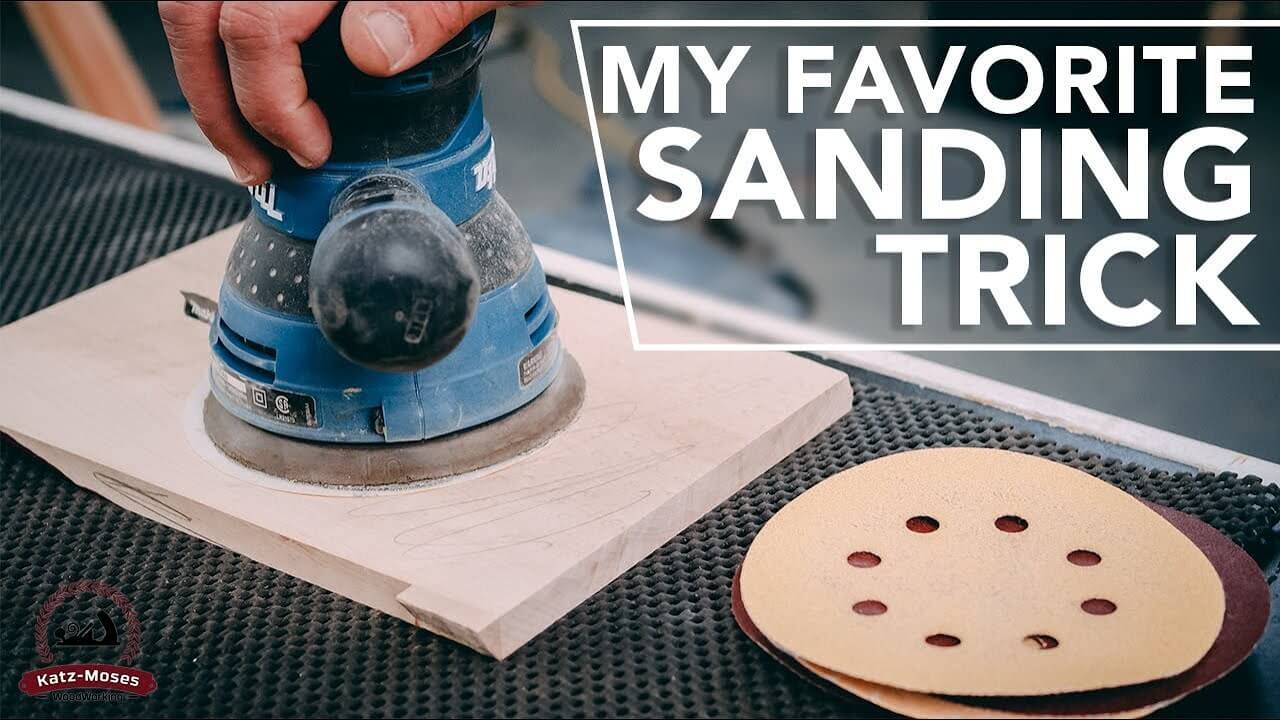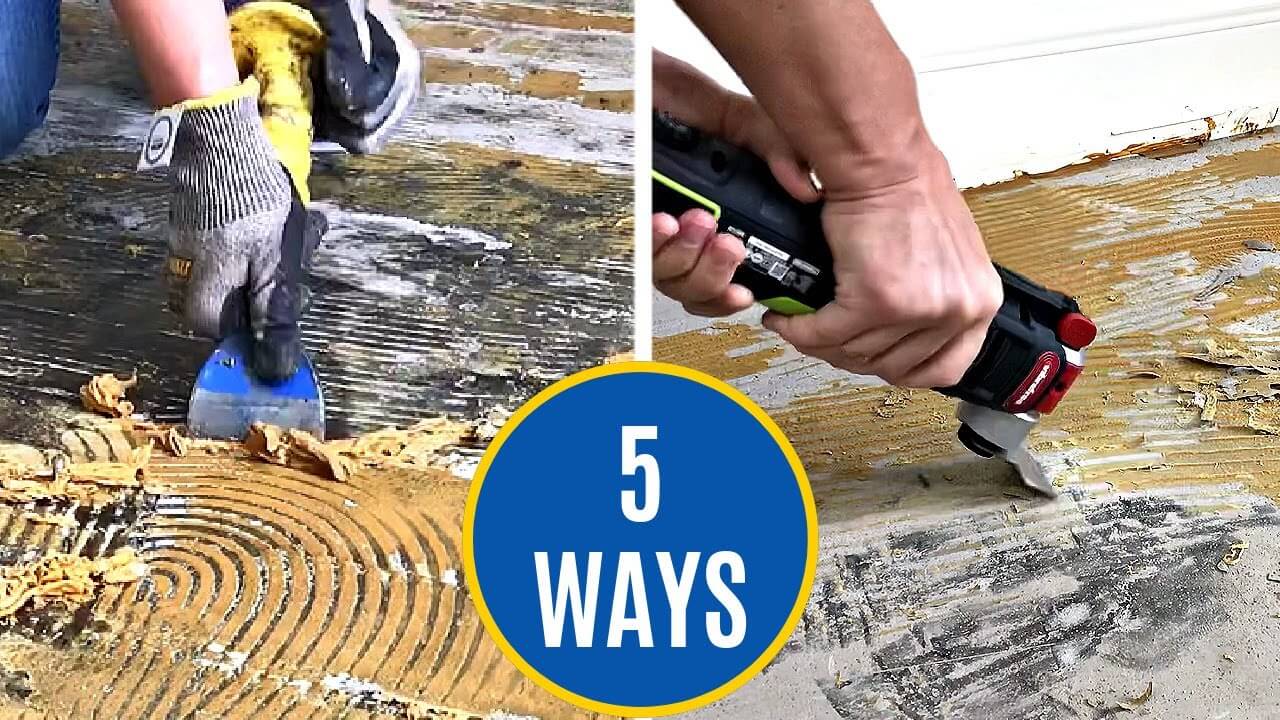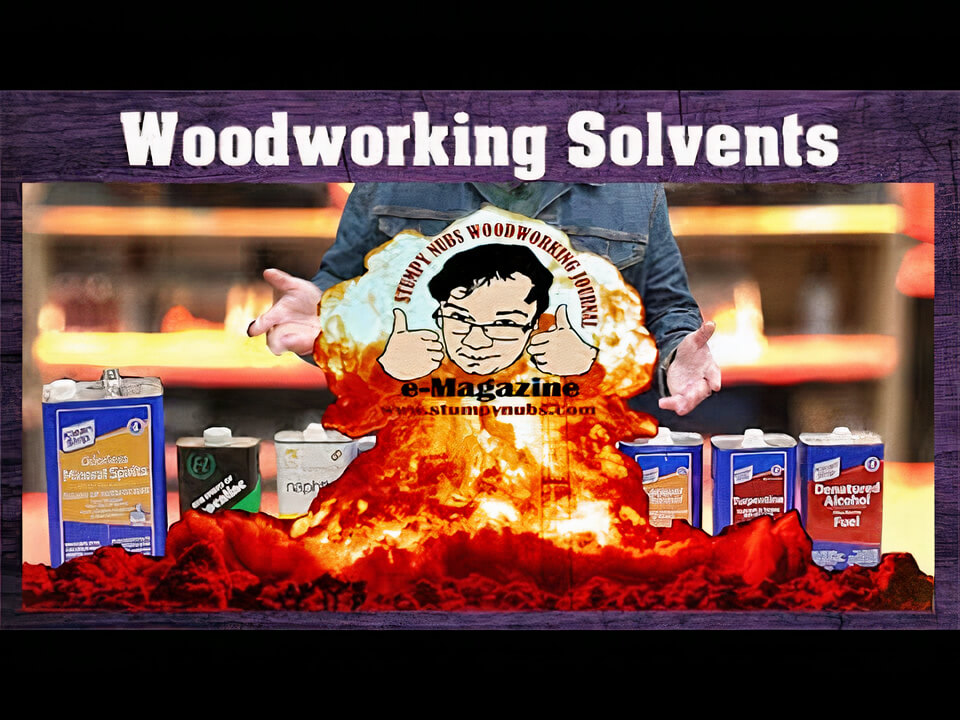How to Remove Glue From Wood: The Most Effective Methods
Struggling with stubborn glue marks on your cherished woodwork? Learn the most effective ways to remove glue from wood and restore your pieces to their original glory.
In a Nutshell:
Removing glue from wood involves identifying the glue type and applying the appropriate removal method. For common adhesives like PVA or polyurethane, household items like vinegar solutions, nail polish remover, or cooking oil can be effective. Apply these gently and scrape the glue off without damaging the wood. Commercial products like Goo Gone and heat methods using hairdryers or heat guns are also effective for tougher adhesives. Always test on a small area first to avoid damaging the wood’s finish.
Identifying the Type of Glue on Wood
DIY woodworking projects often involve the use of various adhesives, each with its unique properties and removal techniques. Recognizing the type of glue on your wooden surface is the first step in ensuring its proper care. Here’s a breakdown of the most common types:
Comparison of Common Adhesives and Their Properties
| Adhesive Type | Properties | Use Cases |
|---|---|---|
| Wood Glue | ||
| PVA (Polyvinyl Acetate) | White or yellow; dries to clear or slightly yellowish hue. Water-soluble when wet, water-resistant when dry. | Woodworking projects where a clear or slightly yellowish finish is acceptable. |
| Polyurethane | Dries to a natural-looking tan featured color; waterproof. | Projects requiring a waterproof bond, especially outdoor furniture. |
| Super Glue (Cyanoacrylate) | Dries clear; rapid bonding. Not water-soluble. | Quick fixes on wood and other materials where a clear and strong bond is needed. |
| PVA Glue (Crafting Variant) | Often termed white or school glue. Dries clear; water-soluble when wet, strong bond when dry. | Crafting projects, especially where clarity upon drying is essential. |
| Loctite Adhesives | Variety of products including epoxy, super glue, and threadlockers. | Depends on the specific product; can be used on wood and other materials based on product type. |
With craftsmanship, knowledge is power. By familiarizing yourself with these adhesive types, you’re not only preserving the integrity of the wood stain your projects but also ensuring their longevity.
Remove Glue From Wood: Common Household Products
Discovering unsightly dry wood glue on your cherished wood pieces can be frustrating. Fortunately, several household items can effectively tackle these adhesives. Here’s a step-by-step guide:
Step 1: White Vinegar Solution
- Combine equal parts of white vinegar and warm water.
- Immerse a cloth in the mixture and place it over the adhesive area.
- After letting it sit for a few minutes, gently scrub to lift the glue.
Step 2: Nail Polish Remover (with Acetone)
- Lightly dab nail polish remover on the glue.
- Allow it to sit for about a minute.
- Carefully scrape off the now-softened glue using a plastic tool or an old credit card.
Step 3: Cooking Oil
- Moisten a cloth or paper towel with vegetable oil.
- Gently rub the sticky area until the residue is gone.
Step 4: Softening Dried Adhesives
- Apply mayonnaise, petroleum jelly, or baby oil to the dried glue.
- Once it’s softened, use a soft cloth to wipe away the residue. (Note: Be cautious with porous woods to prevent stains.)
Step 5: Lemon Juice & Baking Soda Paste
- Create a paste by mixing lemon juice with baking soda.
- Spread this mixture on the adhesive and let it rest for a few minutes.
- Use a damp cloth to gently clear the residue.
Step 6: Final Cleanup
- For any lingering residue, utilize household cleaners like laundry soap or glass cleaner.
- Apply a small amount and then wipe the area clean with a soft cloth.
With these simple steps, you can restore the beauty of your wood surfaces without causing any damage. Always start with the least aggressive method and proceed to stronger solutions if needed.
Removing Glue From Wood: Commercial Products
Navigating the world of adhesives on the open market can be tricky, especially when it comes to removing them from wood surfaces. Removing a PVA wood glue compared to a superglue, will require different removal methods.
Thankfully, there are commercial products specifically formulated to tackle this challenge. Among the top contenders are Goo Gone and Loctite Glue Remover, both budget-friendly options and excellent choices when it comes to removing superglue from wood.
Step 1: Pre-Test the Product
- Before diving in, always test the product on a discreet section of the wood. This ensures compatibility and prevents potential damage or discoloration.
Step 2: Goo Gone Application
- Moisten a clean cloth or cotton ball with a small amount of Goo Gone.
- Gently rub the dampened cloth over the glue residue.
- Allow the product to interact with the adhesive, facilitating its breakdown.
Step 3: Loctite Glue Remover Application
- Dampen a clean cloth or cotton swab with Loctite Glue Remover.
- Carefully dab or rub the product onto the adhesive area.
- Wait a few minutes to let the product penetrate and weaken the glue’s bond.
Step 4: Glue Removal
- Once the adhesive has softened, use a scraper or cloth to gently remove the residue.
- You want to go with the gain when utilizing a scraper and maintain adequate pressure.
Step 5: Safety Precautions
- Always adhere to the manufacturer’s guidelines and safety precautions. This ensures optimal results and minimizes the risk of skin irritation.
Commercial glue removers, such as Goo Gone and Loctite Glue Remover, provide effective and gentle adhesive removal on wood, preserving its quality for both DIYers and professionals.
Using Heat Method for Glue Removal
Utilizing Hair Dryers & Heat Guns
When I need to remove glue from wood, one effective method I often use is applying heat. A hair dryer or a heat gun can come in handy for this task. These tools help in softening the adhesive, making it easier to scrape or peel off the residue. To do this, I aim the hair dryer or heat gun at the glued area, maintaining a safe distance to prevent any damage to the wood. I patiently heat the area until the adhesive softens.
Once the glue is soft enough, I use a plastic scraper or a chisel to gently remove the residue. It’s crucial to work cautiously, as scraping too hard can damage the wood’s surface. Applying heat evenly and gradually to the area helps to achieve the best results.
Applying Hot Water
Another simple yet effective method I use for removing glue residue from wood is applying hot water. This is especially useful when I don’t have a hair dryer or heat gun available. To start, I heat a small amount of water until it’s quite hot but not boiling.
Next, I soak a clean cloth in the hot water, wring it out, and place it over the affected area, letting it sit for a few minutes. The warmth and moisture from the cloth help to loosen the adhesive. Afterward, I carefully peel or scrape off the softened glue with a plastic scraper or a chisel, ensuring not to damage the wood.
Mechanical Ways to Remove Glue from Wood
There are various mechanical techniques that I find effective in removing glue from wood without causing damage to the surface. In this section, I will be discussing two main methods: sanding and scraping, along with the tools I use in these processes.
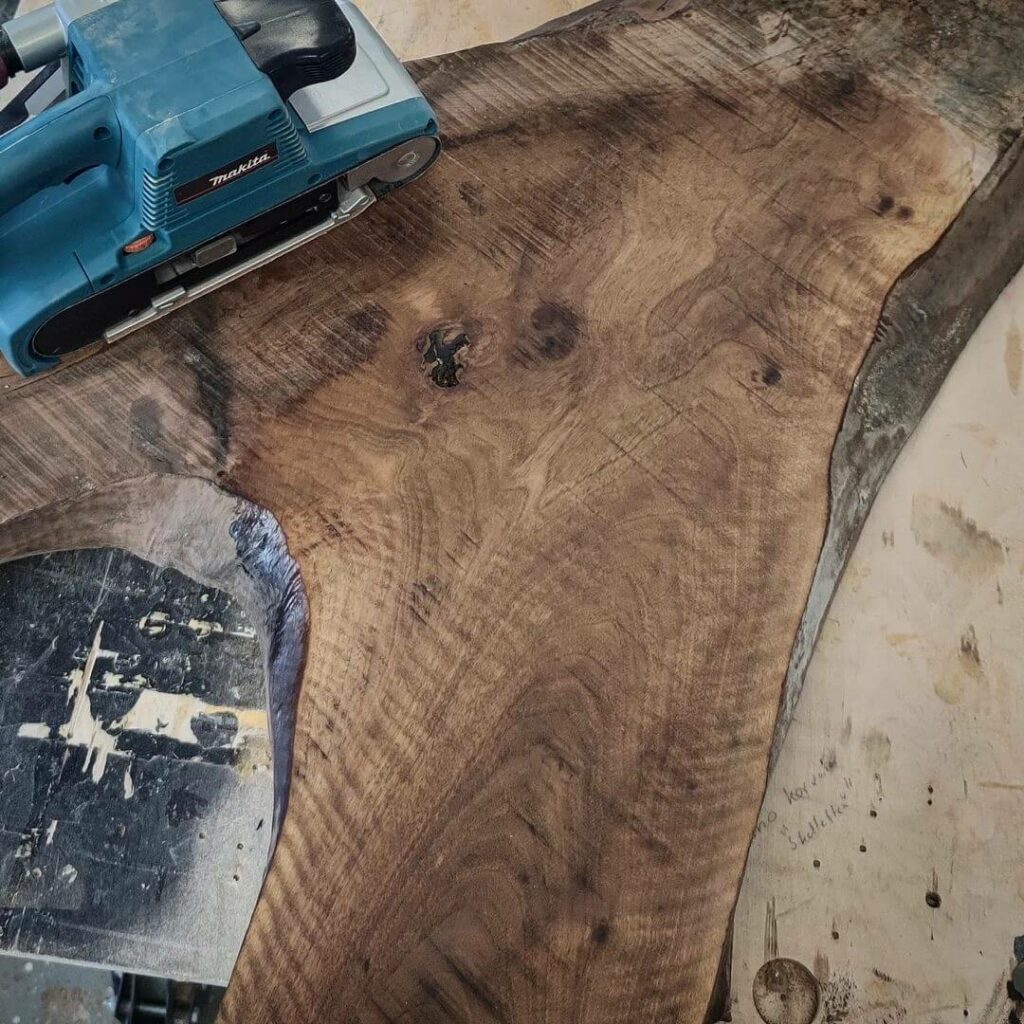
Sanding Technique to Remove Glue
When I need to remove dried glue from wood surfaces, I usually start with sanding. First, I choose the appropriate grit of sandpaper, ranging from coarse to fine, depending on the thickness of the glue layer and the delicacy of the wood. I may also use steel wool to rub off any stubborn glue residue.
Here’s a more in-depth breakdown of the sanding procedure:
- Preparation:
- Choose a stable work surface, preferably a workbench or table.
- Secure the wooden piece using clamps or non-slip pads to ensure it remains stationary throughout the process.
- Selecting the Sandpaper:
- Assess the thickness and tenacity of the glue. For thicker layers or tougher adhesives, start with a coarser grit, such as 60 or 80.
- Have a range of sandpapers on hand, progressing to finer grits like 120, 180, and 220.
- Initial Sanding:
- With the coarsest sandpaper, begin sanding the glue-covered area using a circular motion. This motion helps in evenly distributing the pressure and prevents gouging.
- Apply consistent but gentle pressure, ensuring you’re sanding the glue and not digging into the wood.
- Frequently check the progress to avoid over-sanding.
- Transition to Finer Grits:
- As the majority of the glue gets sanded away, switch to a medium grit sandpaper (e.g., 120 or 150) to continue the removal process.
- Sand in the direction of the wood grain to blend the sanded area with the surrounding wood.
- Once the glue is nearly invisible, transition to the finest grit sandpaper to smooth the surface and eliminate any minor abrasions.
- Post-Sanding Cleanup:
- Using a soft, damp cloth, gently wipe the sanded area to remove any residual sanding dust and particles.
- Allow the wood to dry naturally before applying any finishes or treatments.
Scraping Tools for Glue Removal
Another effective technique I use to remove glue from wood is scraping. Several scraping tools can be used, such as a plastic scraper, putty knife, chisel, or even an old credit card. Choosing the right tool depends on the type and thickness of the glue, as well as the sensitivity of the wooden surface.
Here’s a comprehensive breakdown of the scraping procedure:
- Preparation:
- Begin by inspecting the wooden surface for any dirt, dust, or particles.
- Use a soft brush or cloth to clean the area, ensuring it’s free from any debris that could interfere with the scraping process or cause scratches.
- Choosing the Right Tool:
- Depending on the type and thickness of the glue, select an appropriate scraping tool. Common options include plastic scrapers, putty knives, chisels, or even old credit cards.
- Ensure the edge of the tool is clean and free from any rough spots that might scratch the wood.
- Positioning the Tool:
- Hold the scraping tool at a shallow angle to the wood, almost parallel to the surface. This angle minimizes the risk of gouging or scratching the wood.
- Start at one edge of the glue spot, positioning the tool so it’s ready to slide beneath the adhesive.
- Scraping the Glue:
- With gentle and consistent pressure, push or pull the tool beneath the glue layer, depending on your comfort and the tool’s design.
- Work slowly, ensuring you’re lifting the glue without digging into the wood. If you feel resistance, reposition the tool and continue.
- Dealing with Stubborn Glue:
- If you encounter a particularly tough patch of glue that doesn’t respond to scraping, consider softening it first.
- Using a hairdryer on a low setting, direct warm air onto the glue spot for a few minutes. This heat will soften the adhesive, making it easier to scrape off.
- Once softened, return to the scraping tool and continue the removal process.
- Post-Scraping Cleanup:
- After the glue has been successfully scraped off, wipe the area with a damp cloth to remove any residual adhesive or debris.
- Inspect the wood to ensure all traces of glue have been removed and the surface remains undamaged.
Testing Glue Removal Method on a Small Area
Before diving into removing glue from wood, I always recommend testing the chosen removal method on a small, inconspicuous area. This will help me ensure that the method won’t damage the wood or the finish, especially if I am dealing with a delicate or antique piece.
One of the most popular methods for removing glue from wood is using a chisel. I can start by holding the chisel at a low angle to the wood surface, about 15 degrees, and gently scrape away the dried glue. When using a chisel, it’s crucial to apply light pressure to avoid gouging the wood or causing unnecessary damage.
Another commonly suggested method for glue removal is using vinegar. To test this method, I can wet a soft cloth with white vinegar and gently rub it over the glue spot in a circular motion. While vinegar is generally safe to use, it’s best to test it on a small area to avoid discoloration or damage to the wood finish.
Should I need to use a more aggressive approach for stubborn glue, rubbing alcohol can be my next option. Before applying alcohol, I will dampen a cotton ball with it and test it on an inconspicuous area. If the dried wood glue and surface remains unaltered, I can proceed with rubbing the cotton ball over the glued area until the glue starts to dissolve and come off.
By testing the glue removal method on a small area first, I can confidently find the most efficient and safest way to remove the adhesive without causing damage to the wood or the finish.
Removing Glue Residue from Wooden Surfaces
In my experience, removing glue residue from wooden surfaces can be quite challenging, especially when dealing with different types of wood and finishes. In this section, I’ll share some of my best tips and techniques to help you clean up glue spill from both unfinished and treated wood effectively without damaging your wooden floors or furniture.
How to Clean Unfinished and Treated Wood
When dealing with glue residue on unfinished wood furniture and other untreated wood surfaces, I prefer using a combination of heat and scraping. By using a hairdryer or a heat gun, I gently warm the dried glue until it softens and then carefully scrape it off using a plastic scraper or an old credit card.
For treated, varnished wood, or finished wood surfaces, I recommend using a solvent or a specialized adhesive remover. I apply a small amount of the solvent on a clean cloth and gently rub the area with glue residue until it dissolves and can be wiped away. When using solvents, I always make sure to test them on a small, inconspicuous area first to avoid damaging the wood finish.
For hardwood floors, combining the solvent method with some gentle scraping might be the most effective approach to remove glue residue without damaging the hardwood floor’s finish.
Best Practice on Wooden Floors & Furniture
When it comes to wooden floors and furniture, particularly those with varnished or finished surfaces, I always exercise extra caution to prevent any damage. Here are my best practices:
By following these tips and techniques, I have successfully removed glue stains and residue from various wooden surfaces throughout my home and on my furniture. These methods have proven to be both safe and effective in preserving the beauty and integrity of my woodwork.
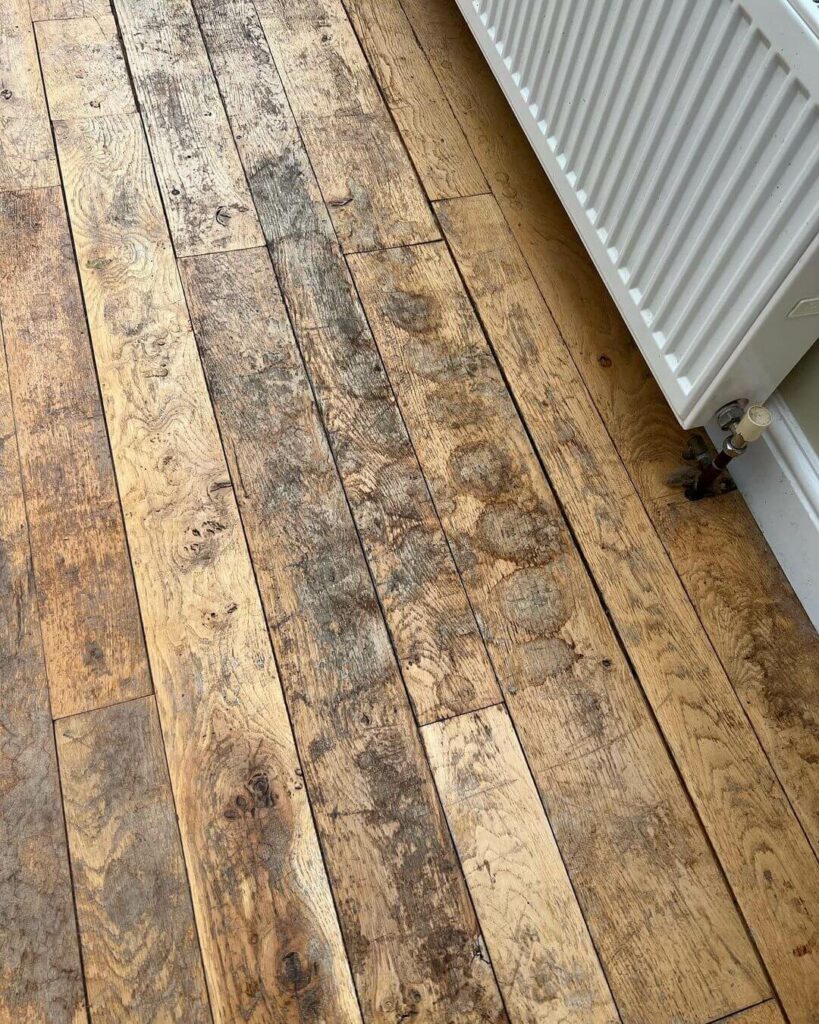
Dealing with Stubborn Adhesive Residue
I’ve encountered stubborn adhesive residue on wood surfaces like on wooden table tops, and it can be a real challenge to get rid of it. In these situations, it’s crucial to use a methodical approach and some household items to effectively remove the residue without damaging the underlying wood.
One technique I’ve found effective in removing sticker residue is using a hairdryer. By applying heat to the area for 30-60 seconds, I can soften the adhesive, making it easier to remove. Once the sticky residue is warm and pliable, I gently scrape it off with the edge of an old credit card. The card’s thin edge allows me to safely remove the adhesive without scratching the wood.
Another approach I’ve employed when dealing with adhesive residue is applying a mixture of equal parts white vinegar and warm water to the affected area. I usually dampen a soft cloth with this solution and rub the residue gently until it dissolves. The vinegar is mildly acidic, which helps break down the stubborn adhesive, while the warm water makes it more effective.
If there’s still any remaining residue, I sometimes resort to a commercial adhesive stain remover, such as Goo Gone. These products offer a powerful solution for the most stubborn cases. However, before applying it to the wood, I always test the product in an inconspicuous area to ensure it won’t cause any damage.
Finally, for instances where the glue has hardened on the surface, you need to use a chisel held at a low angle. This allows me to gently scrape away the dried glue without gouging the wood. Remember to apply light pressure to avoid any damage.
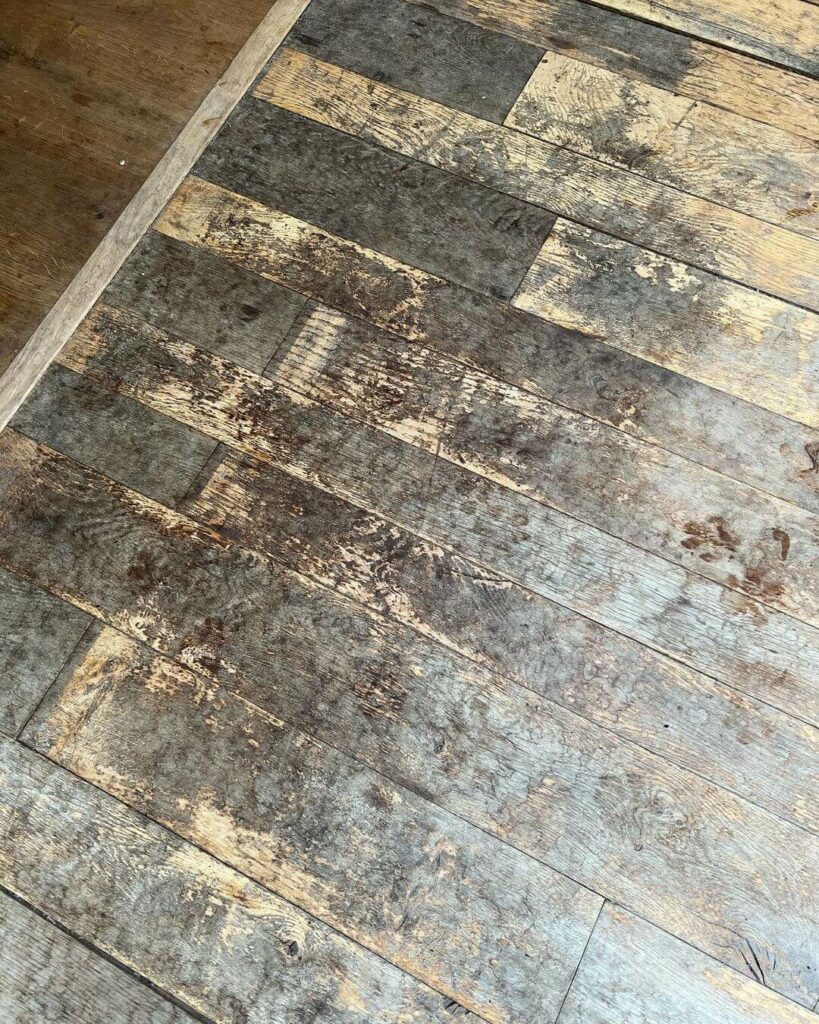
Other Considerations while Handling Glue Removal
When I’m working with glue removal from various surfaces, I like to keep in mind several important factors. First and foremost, it’s important to consider the type of surface the glue is on.
Different types of wood may require varied approaches to ensure the adhesive is effectively removed without causing damage to the wood’s integrity or finish. The choice of method and product is crucial in achieving a clean, glue-free surface.
Recommended Glue Removal Methods and Products Based on Different Woods
| Type of Wood | Recommended Method | Recommended Product |
|---|---|---|
| Softwood (e.g., Pine, Cedar) | Warm Water and Soap | Mild Dish Soap |
| Hardwood (e.g., Oak, Maple) | Vinegar Application | White Vinegar |
| Veneered Wood | Acetone/Nail Polish Remover | Acetone or Nail Polish Remover with Acetone |
| Plywood | Heat Application | Hairdryer or Heat Gun |
| Exotic Woods (e.g., Teak, Mahogany) | Commercial Glue Removers | Specific Commercial Glue Remover (follow manufacturer’s recommendations) |
It’s vital to know your wood type before choosing a glue removal method. Always test a hidden section first to prevent damage, and remember that effective glue removal may require patience and persistence.
Helpful Tips for Successful Glue Removal
When I need to remove glue from wood, I always try to avoid damaging the wood. I start by gently testing the adhesive to see if I can lift it off with a scraper or putty knife. Sometimes, I find that using household items like orange peels or fabric can help loosen the glue without being too abrasive on the wood’s surface.
If the glue is particularly stubborn, I’ll turn to a more concentrated approach. I’ve found that applying a small amount of baking soda to the area can help break down the adhesive. I simply mix a little baking soda with water to create a paste and gently spread it over the glue. Then, I use a wet cloth or cotton buds to remove both the excess glue, and the baking soda mixture.
In situations where the glue remains stuck, I’ll try using a soap solution. I create a mix of warm water and liquid dish soap, then saturate a rag or cloth in the solution. I apply the soapy water to the adhesive and let it sit for a few minutes before wiping it away with a clean cloth.
Another product I find helpful is WD-40. I’ve discovered that applying a small amount of WD-40 to the glue can help dissolve it. I use a cotton bud to apply the WD-40 directly to the adhesive, and after letting it sit for a moment, I wipe it away with a clean cloth.
Throughout the entire glue removal process, I remain confident, knowledgeable, and focused on maintaining a clear and neutral tone. My goal is to effectively remove the glue without damaging the wood, and by using these various methods and materials, I often find success in accomplishing that task.
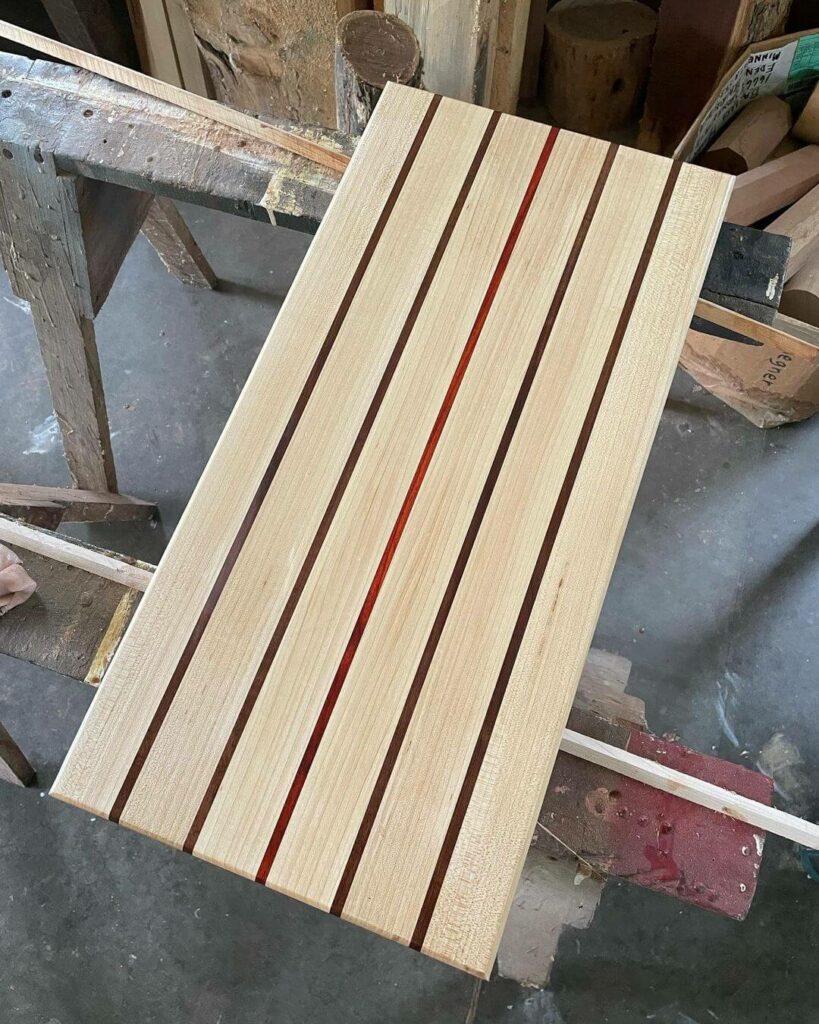
Using Oil-Based Methods for Glue Removal
Using Cooking Oils
I find that cooking oils, especially vegetable oil, can be an effective way to remove glue from wood. To do this, I simply apply a small amount of oil to a clean cloth and gently rub it on the affected area until the glue starts to loosen. This works well for me because oil acts as a lubricant, which helps to break down and dissolve the glue. Afterward, I use soapy water to clean the area thoroughly, ensuring that all traces of oil and any remaining glue or residue are removed.
Another benefit of using cooking oils is that they’re gentle on wood and typically won’t harm the material or its finish. However, I avoid using cooking oil on wood surfaces with a varnish, as it may cause the finish to become sticky or leave a greasy residue. In such cases, I opt for a different method, such as applying mineral spirits.
How to Apply Mineral Spirits to Wood
Mineral spirits are another option to remove glue from wood, particularly for stubborn adhesives or when a more powerful solution is needed. To use this method, follow this step-by-step guide for effectively using mineral spirits on lumber:
- Prepare the Workspace:
- Ensure the area is adequately ventilated for safety due to the strong fumes from mineral spirits.
- Pre-test the Mineral Spirits:
- Dab a small amount on an inconspicuous part of the wood to ensure it won’t harm or discolor the finish.
- Application:
- Soak a clean cloth in mineral spirits.
- Gently rub the dampened cloth over the adhesive spot, allowing the solvent to break down the glue.
- Scrape the Softened Glue:
- Use a plastic scraper to lift the loosened adhesive.
- Exercise caution to avoid damaging the wood.
- Final Cleanup:
- Cleanse the area with a fresh cloth to remove any lingering solvent.
- Allow the wood to air dry thoroughly.
Using mineral spirits can be a game-changer in adhesive removal, ensuring wood surfaces remain clean and undamaged. Always approach with care, prioritizing the wood’s finish and safety.
The Bottom Line
As with many woodworking tasks, the key lies in patience, precision, and choosing the right tool for the job. As you continue on your woodworking journey, you might also find yourself wondering about how to dry wood for woodworking.
Key Takeaways:
Properly dried wood ensures a stable and durable foundation for any project, just as understanding glue removal guarantees a clean and pristine finish. In essence, mastering these skills not only enhances the quality of your work but also elevates the joy and satisfaction derived from the craft.

